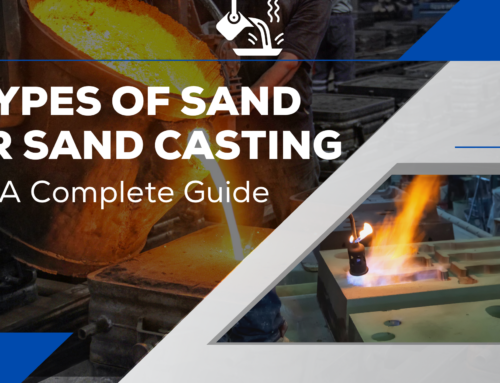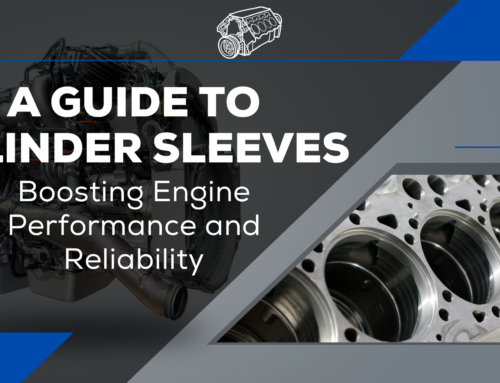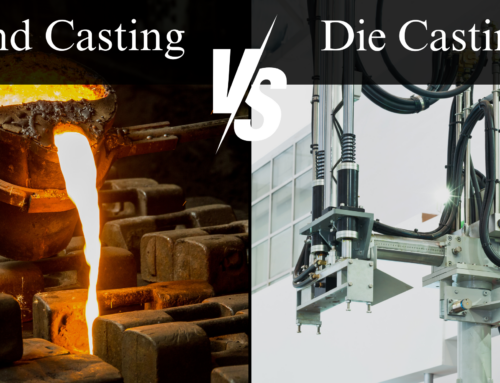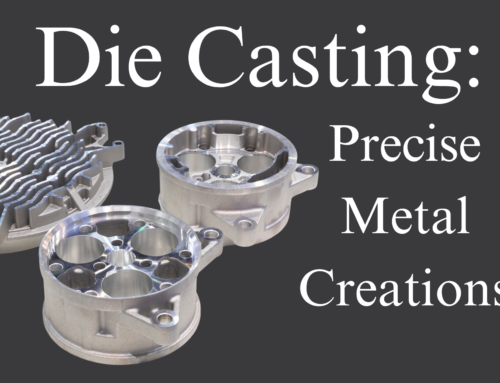What is CI Casting and How it Works?
Welcome to Quaker City Castings blog where today we are going over what CI Casting is and how it works.
Whether you are new to the world of casting or looking to expand your knowledge, this article is here to provide you with valuable insights into CI Casting (Cast Iron Casting).
CI Casting is a widely used metal casting process that involves pouring molten iron into a mold to create various products. From automotive components and machinery parts to pipes and cookware, CI Casting plays a crucial role in manufacturing industries.
In this comprehensive guide, we will walk you through the entire CI Casting process, from the basics of iron casting and the types of cast iron to the intricate details of pouring, solidification, and finishing. We will also explore the advantages of CI Casting, its applications in different sectors, and the factors to consider when selecting a foundry for your casting needs.
Get ready to dive into the world of CI Casting, as we unravel its mysteries and equip you with the knowledge to make informed decisions when it comes to cast iron products.
What is CI Casting?

CI Casting, also known as Cast Iron Casting, is a metal casting process that involves pouring molten iron into a mold to create various products. Cast iron is a group of iron-carbon alloys with a carbon content greater than 2%. It is known for its excellent castability, high strength, and wear resistance, making it suitable for a wide range of applications.
The CI Casting process begins with the melting of iron, typically in a blast furnace. The molten iron is then poured into a mold, which can be made of sand, ceramic, or metal. The mold is designed to have the desired shape and dimensions of the final product. Once the molten iron is poured into the mold, it is left to cool and solidify. After solidification, the mold is removed, and the cast iron product is ready for further processing or use.
There are different types of cast iron used in CI Casting, including gray iron, ductile iron, white iron, and malleable iron. Each type has its own unique properties and applications. Gray iron, for example, is known for its excellent damping capacity and is commonly used in automotive components and machinery parts. Ductile iron, on the other hand, has high tensile strength and is often used in pipes and fittings.
CI Casting offers several advantages over other casting methods. It allows for the production of complex shapes with high accuracy and repeatability. It also provides excellent thermal conductivity and is resistant to deformation at high temperatures. Additionally, cast iron products have good machinability, allowing for easy post-processing.
In the next section, we will delve deeper into the CI Casting process and explore the various stages involved.
The Process of CI Casting

The CI Casting process involves several stages, each playing a crucial role in the creation of cast iron products.
Let’s take a closer look at each stage:
- Pattern Making: The first step in CI Casting is pattern making. A pattern is a replica of the final product, usually made of wood, plastic, or metal. The pattern is used to create the mold and ensures that the cast iron product has the desired shape and dimensions.
- Mold Preparation: Once the pattern is ready, the mold is prepared. The mold can be made of sand, ceramic, or metal, depending on the requirements of the casting. Sand molds are the most commonly used and are created by compacting special casting sand around the pattern. The mold is then carefully removed, leaving a cavity in the shape of the pattern.
- Melting and Pouring: After the mold is prepared, the next step is melting the iron. Iron is melted in a furnace, typically a blast furnace, at high temperatures. Once the iron reaches its molten state, it is poured into the mold through a gating system. The gating system helps in controlling the flow of molten iron and ensures that it fills the mold evenly.
- Solidification and Cooling: After pouring, the molten iron starts to solidify and cool down. The solidification process is critical as it determines the final properties of the cast iron product. The cooling rate and the presence of alloying elements influence the microstructure and mechanical properties of the cast iron.
- Shakeout and Cleaning: Once the cast iron has solidified and cooled, the mold is removed through a process called shakeout. Shakeout involves breaking the mold to reveal the cast iron product. After shakeout, the cast iron product is cleaned to remove any residual sand or other impurities.
- Finishing Operations: Depending on the requirements of the final product, additional finishing operations may be performed. These can include machining, grinding, polishing, or heat treatment. Finishing operations help achieve the desired surface finish, dimensions, and mechanical properties of the cast iron product.
The CI Casting process requires skilled workers and careful control of various parameters to ensure the production of high-quality cast iron products. In the next section, we will explore the advantages of CI Casting and its applications in different sectors.
Advantages of CI Casting
CI Casting offers several advantages that make it a preferred choice in many industries.
Let’s take a closer look at some of the key advantages of CI Casting:
- Design Flexibility: CI Casting allows for the production of complex shapes with high accuracy and repeatability. The mold can be designed to have intricate details and fine features, making it suitable for a wide range of applications.
- Excellent Castability: Cast iron has excellent castability, meaning it can easily flow into the mold and fill complex cavities without any defects. This makes it ideal for creating products with intricate shapes and thin sections.
- High Strength and Wear Resistance: Cast iron has high strength and wear resistance, making it suitable for applications that require durability and resistance to wear and tear. It can withstand heavy loads and is resistant to deformation under high pressures.
- Good Machinability: Cast iron is known for its good machinability, which means it can be easily cut, drilled, and shaped using conventional machining techniques. This allows for easy post-processing and customization of cast iron products.
- Thermal Conductivity: Cast iron has excellent thermal conductivity, meaning it can efficiently transfer heat. This makes it suitable for applications that require heat dissipation, such as engine blocks and brake discs.
- Cost-Effective: CI Casting is a cost-effective process, especially for large-scale production. The initial tooling costs may be higher compared to other casting methods, but the cost per unit decreases with higher production volumes.
The advantages of CI Casting make it a versatile and reliable choice for a wide range of applications.
In the next section, we will explore some of the common applications of CI Casting.
Applications of CI Casting

CI Casting finds applications in various industries, thanks to its unique properties and advantages.
Let’s take a look at some of the common sectors where CI Casting is widely used:
- Automotive Industry: CI Casting is extensively used in the automotive industry for manufacturing engine blocks, cylinder heads, crankshafts, and other components. The high strength and wear resistance of cast iron make it ideal for withstanding the demanding conditions of automotive engines.
- Machinery and Equipment: CI Casting is used in the production of machinery and equipment, including pumps, valves, gears, and pulleys. The design flexibility and excellent castability of cast iron allow for the creation of complex components with high precision.
- Construction and Infrastructure: CI Casting is employed in the construction and infrastructure sectors for manufacturing pipes, manhole covers, and drainage systems. The durability and corrosion resistance of cast iron make it suitable for withstanding the harsh conditions of underground and outdoor environments.
- Cookware and Kitchenware: Cast iron cookware, such as frying pans and dutch ovens, is popular for its excellent heat retention and even heat distribution. The thermal conductivity of cast iron allows for efficient cooking and helps retain the flavors of the food.
- Energy Generation: CI Casting is used in the energy generation sector for manufacturing turbine housings, wind turbine components, and steam engine parts. The high strength and thermal conductivity of cast iron make it suitable for withstanding the extreme conditions of power generation.
These are just a few examples of the many applications of CI Casting. The versatility and reliability of cast iron make it a preferred choice in various industries. However, CI Casting also comes with its own set of challenges.
Let’s explore some of the common challenges in CI Casting in the next section.
Common Challenges in CI Casting
CI Casting, like any other manufacturing process, has its own set of challenges that need to be addressed for successful production.
Here are some of the common challenges in CI Casting:
- Shrinkage and Porosity: Shrinkage and porosity are common defects in CI Casting. Shrinkage occurs during solidification when the molten iron contracts, causing voids or shrinkage cavities in the cast iron. Porosity refers to the presence of small voids or pores in the cast iron, which can affect its mechanical properties.
- Inclusions and Impurities: Inclusions and impurities, such as sand, slag, or oxides, can get trapped in the cast iron during the casting process. These inclusions can weaken the cast iron and reduce its mechanical properties.
- Warpage and Distortion: Cast iron has a high coefficient of thermal expansion, which can lead to warpage and distortion during the cooling and solidification process. Warpage and distortion can result in dimensional inaccuracies and affect the functionality of the cast iron product.
- Mismatched Mold and Pattern: Mismatched mold and pattern can result in casting defects, such as misruns or incomplete castings. It is important to ensure that the mold and pattern are properly aligned and matched to prevent such defects.
- Heat Treatment and Machining: Cast iron requires careful heat treatment and machining to achieve the desired mechanical properties and surface finish. Improper heat treatment or machining can result in brittleness, excessive hardness, or poor dimensional accuracy.
Addressing these challenges requires skilled workers, proper process control, and quality assurance measures.
In the next section, we will explore the importance of quality control in CI Casting.
Quality Control in CI Casting
Quality control is crucial in CI Casting to ensure the production of high-quality cast iron products.
Here are some key aspects of quality control in CI Casting:
- Raw Material Inspection: The quality control process begins with the inspection of raw materials, including the iron, alloying elements, and additives. The raw materials should meet the required specifications and standards to ensure the desired properties of the cast iron.
- Process Monitoring: Continuous process monitoring is essential to ensure that the CI Casting process is carried out within the specified parameters. This includes monitoring the melting temperature, pouring time, solidification rate, and other critical process variables.
- Non-Destructive Testing: Non-destructive testing techniques, such as ultrasonic testing and X-ray inspection, are used to detect internal defects and ensure the integrity of the cast iron product. These techniques help identify any hidden defects that may affect the performance of the cast iron.
- Dimensional Inspection: Dimensional inspection is performed to verify that the cast iron product meets the required dimensions and tolerances. This can be done using various measurement techniques, including coordinate measuring machines (CMM) and optical inspection systems.
- Mechanical Testing: Mechanical testing is conducted to evaluate the mechanical properties of the cast iron, such as tensile strength, hardness, and impact resistance. These tests help ensure that the cast iron meets the specified requirements and can withstand the intended applications.
Quality control measures should be implemented throughout the entire CI Casting process, from pattern making to finishing operations. This ensures that the cast iron products meet the required standards and customer expectations.
In the next section, we will compare CI Casting with other casting methods to understand its unique advantages and limitations.
CI Casting vs Other Casting Methods
CI Casting is just one of the many casting methods available today. Each casting method has its own advantages and limitations.
Let’s compare CI Casting with some other commonly used casting methods:
- Sand Casting: Sand casting is a widely used casting method that involves creating a mold using sand. Compared to CI Casting, sand casting offers more design flexibility and is suitable for both small and large-scale production.
- Investment Casting: Investment casting, also known as lost-wax casting, is a precision casting method that uses a wax pattern to create the mold. Investment casting provides excellent surface finish and dimensional accuracy, making it suitable for complex and intricate parts.
- Die Casting: Die casting is a casting method that involves injecting molten metal into a mold under high pressure. Die casting offers high production rates and excellent dimensional accuracy. However, it is more suitable for light alloys, such as aluminum and zinc, and may not be ideal for cast iron products.
- Permanent Mold Casting: Permanent mold casting, also known as gravity die casting, is a casting method that uses reusable molds made of metal. It offers good dimensional accuracy and surface finish.
Each casting method has its own advantages and limitations, and the choice depends on factors such as the complexity of the part, production volume, and cost considerations.
Understanding CI Casting
CI Casting (Cast Iron Casting) is a widely used metal casting process that offers several advantages in terms of design flexibility, strength, durability, and cost-effectiveness. It is a versatile and reliable choice for various applications in industries such as automotive, machinery, construction, and cookware.
Understanding the CI Casting process, its advantages, and challenges is essential for making informed decisions when it comes to cast iron products. Quality control measures and careful process monitoring play a crucial role in ensuring the production of high-quality cast iron products.
While CI Casting has its own unique advantages, it is important to consider other casting methods and their suitability for specific applications. Sand casting, investment casting, die casting, and permanent mold casting are some of the alternatives worth exploring.
We hope this guide has provided you with valuable insights into CI Casting and equipped you with the knowledge to understand and appreciate this fascinating casting process. Whether you are a manufacturer, designer, or simply curious about the world of casting, CI Casting offers endless possibilities for creating durable and reliable cast iron products.
At Quaker City Castings whether it be Cast Iron, Steel or Nickle Alloy we can make a cast for whatever your business needs. Click here and reach out to us today.








Leave A Comment